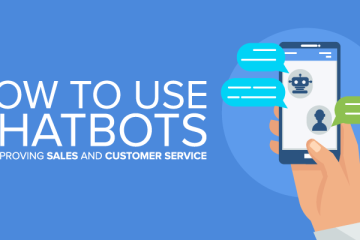In the ever-evolving landscape of digital advertising, programmatic ad tech stands out as a revolutionary approach, fundamentally altering how ads are bought and sold. Central to this transformation are artificial intelligence (AI) and machine learning (ML), technologies that are reshaping the industry’s dynamics. This article explores how AI and ML are driving advancements in programmatic ad tech, enhancing efficiency, targeting, and overall effectiveness.
Understanding Programmatic Ad Tech
Programmatic ad tech, as utilized by a programmatic ad tech companies like https://smartyads.com/ involves the automated buying and selling of digital advertising space using advanced technology and algorithms. Unlike traditional ad buying, which typically requires direct negotiations and manual processes, programmatic advertising leverages sophisticated software and data to streamline transactions. This automation facilitates real-time bidding, precise targeting, and dynamic ad placements, thereby making the ad buying process more efficient and scalable.
Key Components of Programmatic Advertising:
– Demand-Side Platforms (DSPs): Platforms that allow advertisers to buy ad space across various networks and publishers through automated bidding.
– Supply-Side Platforms (SSPs): Platforms that help publishers manage and sell their ad inventory programmatically.
– Ad Exchanges: Marketplaces where DSPs and SSPs interact to facilitate the buying and selling of ad space in real-time.
– Data Management Platforms (DMPs): Platforms that collect and analyze data to enhance targeting and ad effectiveness.
The Role of AI and ML in Programmatic Ad Tech
AI and ML are at the forefront of transforming programmatic ad tech by enhancing various aspects of the advertising ecosystem. Here’s how these technologies are making an impact:
1. Enhanced Targeting and Personalization
One of the primary benefits of AI and ML in programmatic ad tech is the ability to deliver highly targeted and personalized ads. Traditional ad targeting often relies on broad demographic data and limited behavioral insights. In contrast, AI-driven targeting leverages extensive data sets to create detailed user profiles and deliver ads tailored to individual preferences.
– Predictive Analytics: Machine learning algorithms analyze historical data to predict future behaviors and preferences. This enables advertisers to anticipate user needs and deliver relevant ads.
– Real-Time Data Processing: AI systems process vast amounts of data in real-time, allowing for immediate adjustments to ad campaigns based on current user behavior and market conditions.
2. Improved Ad Placement and Bidding Strategies
AI and ML enhance ad placement and bidding strategies by optimizing decisions and processes that were previously manual and time-consuming.
– Dynamic Bidding: Machine learning algorithms can adjust bidding strategies in real-time based on factors such as user engagement, ad performance, and competition. This helps ensure that ad spend is used efficiently and effectively.
– Contextual Relevance: AI analyzes the context in which ads are displayed, including content and user interactions, to determine the most relevant ad placements. This improves ad relevance and user experience.
3. Fraud Detection and Prevention
Ad fraud is a significant concern in digital advertising, with issues such as fake impressions, clicks, and bots impacting ad spend and performance. AI and ML play a crucial role in detecting and preventing fraud.
– Anomaly Detection: Machine learning algorithms identify unusual patterns and anomalies in ad traffic, flagging potential fraudulent activities. This helps reduce the impact of fraud on ad campaigns.
– Behavioral Analysis: AI systems analyze user behavior to distinguish between genuine and fraudulent interactions, ensuring that advertisers’ budgets are spent on real and valuable engagements.
4. Creative Optimization
AI and ML contribute to optimizing ad creatives, making them more engaging and effective.
– Dynamic Creative Optimization (DCO): AI-driven DCO tools generate and test multiple ad variations to determine which creatives perform best. This allows for continuous optimization and improved ad performance.
– Personalized Creatives: Machine learning algorithms tailor ad creatives to individual user preferences and behaviors, enhancing relevance and engagement.
5. Improved Attribution and Measurement
Attribution and measurement are critical for understanding the effectiveness of ad campaigns. AI and ML enhance these processes by providing more accurate and actionable insights.
– Multi-Touch Attribution: AI models analyze various touchpoints in the customer journey to attribute conversions more accurately. This helps advertisers understand the impact of different channels and optimize their strategies.
– Advanced Analytics: Machine learning algorithms process and analyze large datasets to provide deeper insights into ad performance, user behavior, and campaign effectiveness.
Case Studies: AI and ML in Action
1. Case Study: E-Commerce Brand
An e-commerce brand implemented AI-powered programmatic advertising to improve its customer acquisition efforts. By leveraging machine learning algorithms for predictive analytics, the brand was able to identify high-value customer segments and target them with personalized ads. The result was a significant increase in conversion rates and a more efficient use of the advertising budget.
2. Case Study: Media Publisher
A media publisher used AI-driven dynamic creative optimization to enhance ad performance. The publisher tested multiple ad variations and adjusted creatives in real-time based on user interactions. This approach led to higher engagement rates and improved revenue from programmatic ads.
3. Case Study: Financial Services Company
A financial services company employed AI and ML to detect and prevent ad fraud. By analyzing traffic patterns and user behavior, the company identified fraudulent activities and adjusted its bidding strategies to minimize the impact of fraud. This resulted in a more effective ad spend and improved campaign performance.
Challenges and Considerations
While AI and ML offer numerous benefits, there are also challenges and considerations to be aware of:
– Data Privacy and Security: The use of AI and ML in programmatic advertising requires the collection and analysis of large amounts of user data. Ensuring compliance with data privacy regulations, such as GDPR and CCPA, is essential.
– Algorithm Transparency: The complexity of AI and ML algorithms can make it difficult to understand how decisions are made. Advertisers should seek transparency and insights into algorithmic processes to ensure fair and effective ad placements.
– Bias and Fairness: AI algorithms can inadvertently introduce bias into ad targeting and placement. It’s important to regularly monitor and address potential biases to ensure equitable and inclusive advertising practices.
Future Trends in AI and ML for Programmatic Ad Tech
As AI and ML continue to evolve, several emerging trends are shaping the future of programmatic ad tech:
– Voice and Visual Search Integration: AI-driven voice and visual search technologies are becoming increasingly prevalent. Integrating these technologies with programmatic advertising can enhance targeting and personalization.
– Augmented Reality (AR) and Virtual Reality (VR) Ads: AI and ML are facilitating the development of immersive ad experiences through AR and VR. These technologies offer new opportunities for engaging and interactive advertising.
– Ethical AI: There is a growing focus on ethical AI practices, including fairness, transparency, and accountability. The adoption of ethical AI principles will be crucial for maintaining trust and integrity in programmatic advertising.
Conclusion
Artificial intelligence and machine learning are transforming the programmatic ad tech industry, driving advancements in targeting, optimization, fraud detection, and measurement. These technologies enable programmatic ad tech companies to deliver more effective and efficient advertising solutions, enhancing the overall user experience and maximizing ROI.
By understanding and leveraging the capabilities of AI and ML, advertisers and publishers can stay ahead in the competitive landscape of digital advertising. As the industry continues to evolve, embracing these technologies will be key to unlocking new opportunities and achieving success in programmatic advertising.
Whether you are an advertiser seeking to optimize your campaigns or a publisher looking to enhance ad revenue, integrating AI and ML into your programmatic ad strategies can provide significant benefits. Stay informed about emerging trends and best practices to make the most of these transformative technologies and drive your advertising efforts to new heights.



